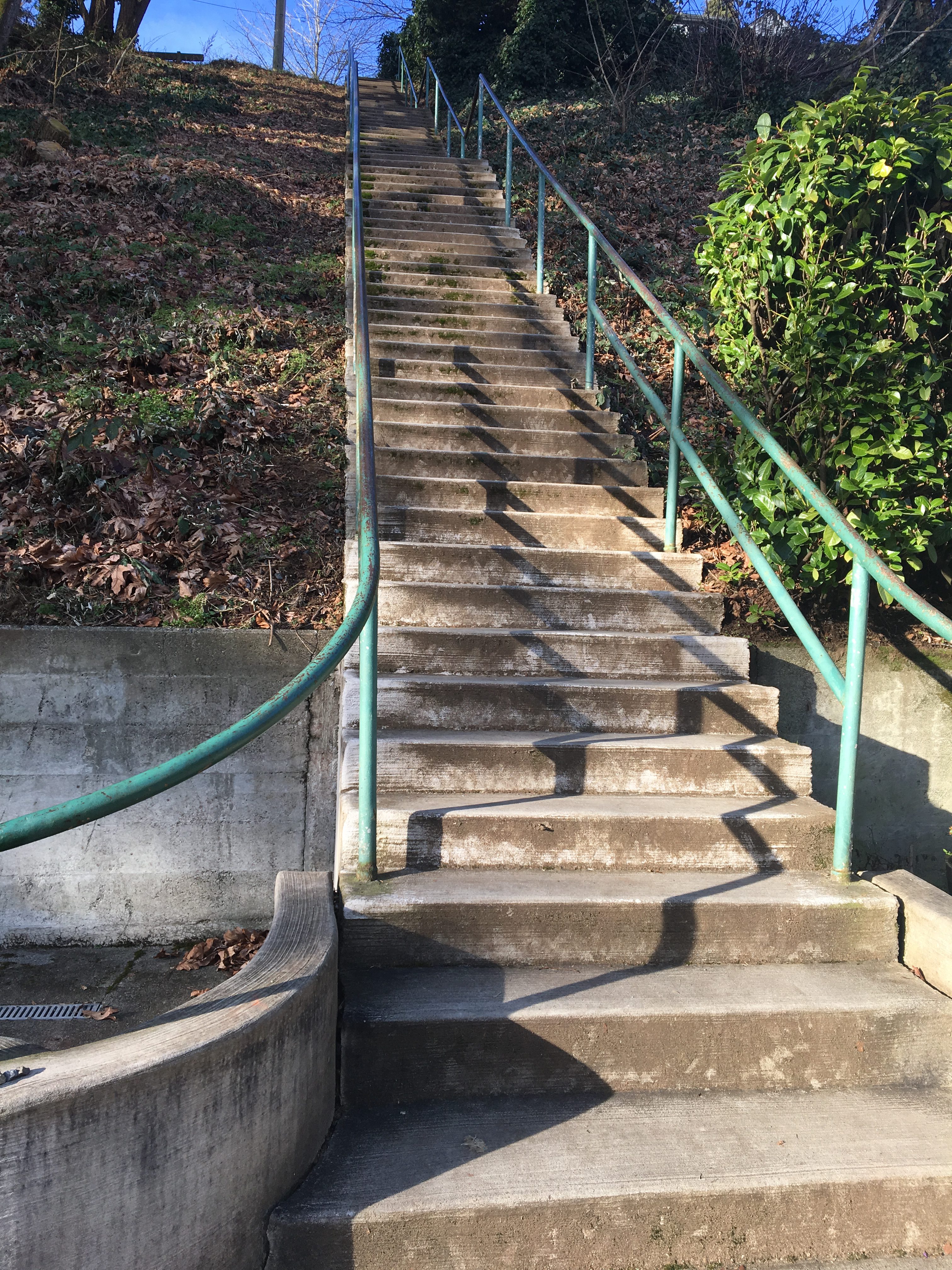Breaking Through the Pain of a New Exercise Program
We are about three weeks into our goal-getting and we’re cruising along pretty well by now! Though I have to admit that the first week was rough. Holy moley.
Improving your fitness is tricky, in a way, because your body is trained for exactly what you have asked it to train for. If that is running 3 flat miles regularly, you’ll be trained for that and it won’t be tough. But add in an unexpected hill or try to push to 4 or 5 miles and that will be tough. Your muscles and cardiovascular system are simply not prepared for it. If what you’re trained for is couch surfing, you’ll be trained for that and it won’t be tough. Anything more though – climbing stairs, lifting boxes, or going dancing with your sweetheart – might be pretty tough.
So when you set a goal to improve your fitness, whether it’s cardiovascular or muscular, you can bet you’re going to be dealing with some discomfort.
Exhibit A: Becki and “The Stairs”
It was a cold, January morning. I had a “brilliant” idea.
“Charlie,” I said, “do you know of any long flights of stairs locally?”
“Sure,” he replied. “The 2nd Ave stairs. Why?”
“I was thinking I should start running stairs to up my cardio, ” said I.
Why? Why did I say that? I should have my head examined.
So off we go, to “The Stairs.” I in my new jewel-toned, patterned leggings thinking I can conquer the world, and Charlie in his excellent cardiovascular shape and 45-lb weight vest. Sickening, isn’t it?
So off I trot up the stairs, jogging all the way. I make it to the top with minimal protests from my quadriceps. Down the stairs I go. Lap one done.
Charlie is wisely pacing himself.
I, however, am feeling so good I immediately (no rest, who needs it?) turn right around and jog back up the stairs. Halfway. Until there is fire all throughout my chest and I think my heart is in imminent danger of fatal explosion.
“Am I dying? Is it all over? I must have some kind of undiagnosed heart condition!”
So this is what it’s like to have “fair” cardiovascular endurance. I gotta tell ya, I’m not a fan.
I slogged (no more trotting) up the rest of the way and managed to go down, and up, and down, and up and down once more before my lungs, heart, and quads could not take it anymore. Meanwhile a 50-something lady in excellent shape has been lunging the stairs two at a time since before we got there, and continued after we left. Impressive.
We walked back to the car and I flopped in the passenger seat, my inner drama queen insisting that I truly was going to die and that I should make sure my husband knew how much I really love and appreciate him.
The fire in my chest lasted for a painful thirty minutes, during which torture I had a succession of three different thoughts:
- “Man, I really, really, REALLY need to improve my cardio.”
- “I totally get why people quit exercising after the first day or two. This is horrific.”
- “I should write a post to help people get through this and get to their goals.”
So I decided to write up a few tips for others who are facing a fizzling New Years’ resolution in the face of a difficult new exercise program:
- Remember your finish line. What is your purpose? Why are you doing this? It usually has to be something bigger than the way you look to stick, so think bigger and in detail. Think health – how will your body feel when you are fit? What health issues will you not have to worry about? Think abilities – how will it feel when you can climb any set of stairs or take on any challenge with ease and confidence? Envision it in detail to yourself before you hit the gym (or the road or the stairs, etc) and keep that picture with you when it gets tough.
- Difficulty = progress. To an extent, anyway (caveat below). If it’s not at least a little tough, you might not be pushing hard enough to see improvement in your abilities. You don’t have to kill yourself, but when you push past what your body can easily do, that’s when the training comes in. You’re telling your body that the cardiovascular or muscular capabilities it’s currently trained for are not enough to meet the physical demands you’re putting on it. So when it rebuilds, repairs, or builds new cells, it will make them better. They will be more easily oxygenated or stronger or whatever is necessary to be more trained for the activity you’re asking your body to do.
- Work up to it. I was probably a tad too ambitious – power mad with the confidence of a new pair of leggings – to go trotting up those stairs like I’d been running them all my life. It didn’t have to be so hard. Some exercise is way better than none, so start slower and gradually increase to prevent some of the (very literal) heartache I experienced. It can be tough to admit that you’ve lost some edge or abilities you once had (oh, how the mighty have fallen!), but it’s better than quitting after 1-2 days and giving up on achieving your goals!
- Be patient. The first 4-6 weeks of a new exercise program (one you’ve never done before) produces mostly neural and cellular changes. That means that you’re building new nerve pathways. That also means that you may or may not feel a difference, and you also may not see any difference. That does not mean that you are not training your body. Does anyone have a guess as to the length of time the average person sticks with a new exercise program before quitting? 4-6 weeks. People are quitting because they aren’t noticing results, but that’s because their bodies are building the foundations for the results they are looking for! Hang in there – don’t give up!
It took me about three stair days and three days of other cardio before it wasn’t really miserable to climb those stairs anymore. All in all, remember that when you start any new exercise program, your body is totally unprepared for it – take it easy, push gently beyond what is comfortable, and be patient. You’ll get there!




Leave a Comment